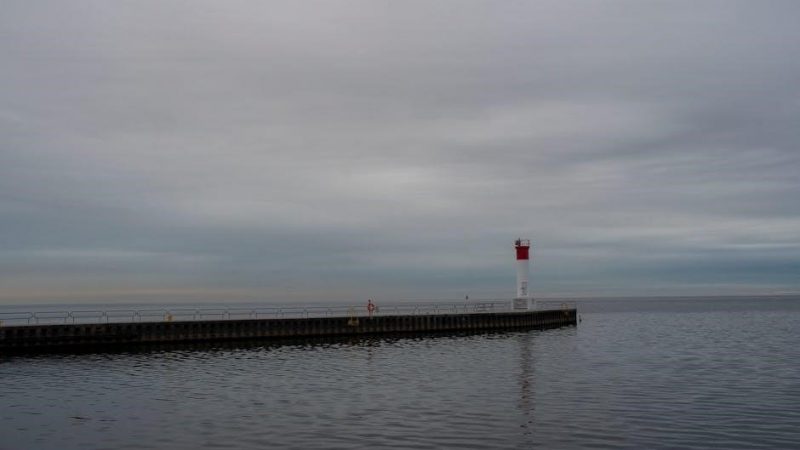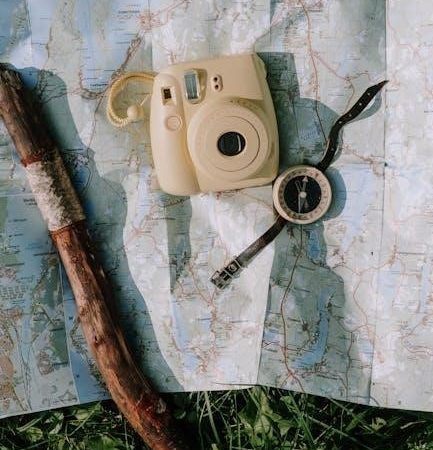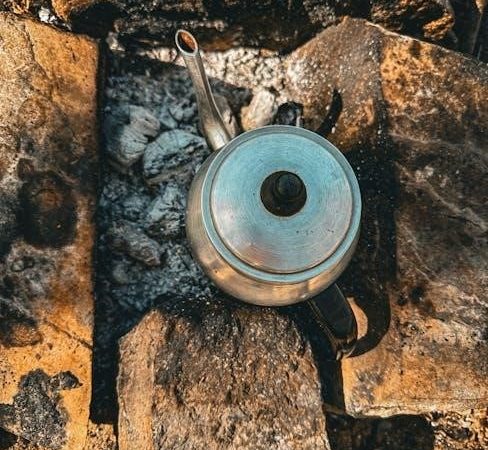how much to tip fishing guide
How Much to Tip a Fishing Guide: A Comprehensive Guide
Welcome to our guide on tipping fishing guides. Tipping etiquette can be confusing, but showing appreciation is key. The standard tip is 15% to 20% of the trip cost, reflecting the guide’s effort, not the catch. This ensures a memorable experience for both you and your guide.
Tipping a fishing guide is a thoughtful way to express gratitude for their expertise and effort during your trip. While there’s no strict rule, it’s customary to tip between 15% to 20% of the total trip cost. This range reflects the guide’s dedication, knowledge, and the overall quality of the experience they provide. Tipping is not mandatory but is widely expected and appreciated, as it acknowledges the hard work and personalized service you receive. Whether the day is filled with abundant catches or challenging conditions, the tip should be based on the guide’s professionalism and how they manage the variables within their control, such as navigation, equipment, and instruction. Remember, tipping is a gesture of appreciation, so adjust the amount based on your satisfaction and the guide’s performance. This etiquette ensures a positive experience for both you and your guide, fostering a memorable and enjoyable fishing adventure.
Standard Tipping Rates
When determining how much to tip a fishing guide, it’s important to follow established standards to ensure fairness and appreciation for their services. The general rule of thumb is to tip between 15% to 20% of the total trip cost. This range is widely accepted across the fishing industry and reflects the guide’s expertise, effort, and the overall quality of the experience provided. For example, if the trip costs $500, a tip of $75 to $100 would be appropriate. This percentage-based approach ensures that the tip aligns with the cost of the service and the level of satisfaction you experienced.
Some guides and charter services may include gratuity in the total price, so it’s always a good idea to check beforehand. If the tip is already included, additional gratuity is optional but appreciated for exceptional service. On the other hand, if you’re dissatisfied with the experience, it’s still customary to tip at least 10%, as guides often rely on tips to supplement their income.
During peak seasons, holidays, or for particularly memorable trips, consider tipping on the higher end of the scale or even exceeding it. This not only shows appreciation but also strengthens your relationship with the guide, which can be beneficial for future bookings. Remember, tipping is a way to acknowledge the guide’s hard work and dedication to ensuring your fishing trip is enjoyable and successful.
Factors Influencing the Tip Amount
Several factors can influence the amount you decide to tip a fishing guide. First and foremost, consider the guide’s effort and professionalism. If the guide demonstrated exceptional knowledge, worked diligently to locate fish, and ensured a safe and enjoyable experience, a higher tip is warranted. Conversely, if the guide seemed disengaged or unprepared, you may adjust the tip accordingly.
The success of the trip also plays a role, though it’s important to remember that guides cannot control factors like weather or fish behavior. A day with abundant catches might naturally lead to a more generous tip, while a challenging day with fewer bites might still deserve a fair gratuity, as the guide’s effort often remains consistent regardless of outcomes.
The overall quality of the experience is another key consideration. This includes the condition of the boat, the quality of the equipment, and the guide’s ability to adapt to your needs and preferences. If the guide went above and beyond to ensure your satisfaction, such as providing additional instruction or accommodating special requests, it’s appropriate to reflect this in the tip.
Lastly, the length and type of the trip can influence the tip amount. Half-day trips might warrant a slightly smaller percentage than full-day excursions, while specialized trips, such as fly fishing or deep-sea charters, may call for a higher tip due to the guide’s specialized expertise. Ultimately, the tip should reflect your overall satisfaction and the value you felt you received from the experience.
Considering Group Size
When determining how much to tip a fishing guide, group size is an important factor to consider. Guides often adjust their services based on the number of anglers, and larger groups may require more effort and resources. For smaller groups, such as one or two people, the standard tipping range of 15% to 20% of the total trip cost typically applies. However, for larger groups, the tip should still be calculated based on the total cost, not per person, as the guide’s overall workload increases.
Larger groups may also benefit from the guide’s ability to manage multiple anglers, ensuring everyone has an enjoyable experience. If the guide successfully coordinates the group, provides individual attention, and ensures safety, a tip on the higher end of the spectrum is appropriate. Conversely, if the group size feels too large for the guide to handle effectively, you may adjust the tip downward.
It’s also worth considering whether the guide charges differently for larger groups. Some guides may include a base rate for a certain number of people and charge extra for additional anglers. In such cases, the tip should reflect the total cost of the trip, including any extra fees. If the guide goes above and beyond to accommodate your group’s needs, such as providing extra equipment or instruction, this should also be acknowledged in the tip.
Ultimately, the key is to ensure the tip reflects the guide’s effort and the quality of service provided, regardless of group size. Whether you’re fishing alone or with a group, showing appreciation for a job well done is always appreciated and helps ensure a positive experience for future trips.
Evaluating Guide Performance
Evaluating the performance of your fishing guide is crucial when determining how much to tip. A guide’s effort, knowledge, and ability to adapt to conditions significantly impact the quality of your experience. While the number of fish caught isn’t the sole indicator of a good trip, the guide’s professionalism and dedication should be considered.
A skilled guide will go above and beyond to ensure a successful and enjoyable trip. This includes arriving prepared with the right gear, sharing expertise on fishing techniques, and making adjustments based on weather and fish behavior. If the guide demonstrates a genuine interest in your success and safety, it reflects their commitment to providing a memorable experience.
Consider how well the guide handled challenging situations, such as difficult weather conditions or limited fish activity. A guide who remains patient, positive, and proactive in these scenarios deserves a higher tip. Conversely, if the guide seemed disengaged or unprepared, you may adjust the tip accordingly.
Ultimately, the tip should reflect the guide’s overall performance and the value they added to your trip. Even if the fishing wasn’t successful, a fair tip is still appropriate, as it acknowledges the guide’s effort and professionalism. By evaluating these factors, you can determine a tip that aligns with the quality of service you received.
Additional Staff and Services
When considering how much to tip a fishing guide, it’s important to account for additional staff and services that may be part of your trip. Many fishing charters or lodges employ multiple individuals, such as deckhands, cooks, or lodge staff, who contribute to your overall experience. These individuals often work behind the scenes to ensure your trip is enjoyable and successful.
If your trip includes a deckhand or additional crew members, they typically receive a portion of the tip given to the main guide. However, if you feel that a specific staff member went above and beyond, you may consider tipping them separately. For example, if a deckhand was particularly helpful with handling gear or assisting with fish, a small additional gratuity is a thoughtful gesture.
Lodge staff, such as cooks or housekeeping, may also play a role in enhancing your experience. If you’re staying at a lodge as part of your fishing trip, consider tipping these staff members separately, as they are not typically included in the guide’s tip; A standard tip for lodge staff is 10% to 15% of your stay or a flat rate per person, depending on the establishment’s policies.
Some charters or lodges may also offer additional services, such as fish cleaning, meal preparation, or gear rentals. If these services are provided by staff beyond the guide, it’s courteous to recognize their efforts with a tip. Always check if gratuity is included in the initial cost, as this can vary by provider.
International Tipping Customs
When planning a fishing trip abroad, understanding international tipping customs is essential to ensure you show proper appreciation for your guide’s services. Tipping practices vary significantly across countries and cultures, so it’s important to research local norms before your trip. In the United States, tipping a fishing guide is standard, with 15% to 20% of the total trip cost being customary. However, in other parts of the world, tipping customs may differ.
In Mexico and Costa Rica, for example, tipping is also expected but may be slightly lower, typically ranging from 10% to 15%. In these regions, guides often rely heavily on tips to supplement their income, making your gratuity a significant part of their earnings. In contrast, in some European countries, such as the UK or Ireland, tipping is less formal, and a smaller amount, around 5% to 10%, is considered appropriate.
In some destinations, tipping may even be included in the initial cost of the trip, so it’s crucial to clarify whether gratuity is already covered. For instance, in certain African or Asian countries, tipping is often expected but may be distributed among a team of staff, including guides, cooks, and drivers. In these cases, a pooled tip is common, with each individual receiving a portion based on their role.
Additionally, some cultures place a greater emphasis on service quality when determining tip amounts; In Japan, for example, tipping is not traditionally expected and may even be considered impolite in certain contexts. Similarly, in some Scandinavian countries, service charges are often included in bills, making additional tipping unnecessary.
Understanding these cultural differences ensures that you tip appropriately and respectfully, regardless of where your fishing adventure takes you. Always research local customs beforehand to avoid unintended offense and to show genuine appreciation for your guide’s efforts.
Payment Methods
When it comes to tipping a fishing guide, the method of payment can vary depending on the guide’s preferences and the location of the trip. In most cases, cash is the preferred method, as it ensures the guide receives the tip directly and immediately. However, some guides may accept credit cards, especially if they operate through a larger company or lodge. It’s always a good idea to confirm payment methods in advance to avoid any inconvenience.
Digital payment options, such as Venmo or PayPal, are becoming increasingly popular, especially among younger guides. These platforms offer a convenient way to send tips, but it’s important to ensure the guide has an account set up to receive payments. Additionally, some fishing charters or lodges may include a gratuity line on their invoices, allowing you to add the tip when paying by credit card.
If you’re unsure about the preferred payment method, it’s best to ask the guide directly. Some may prefer cash, while others may have a system in place for handling tips through their booking platform. Regardless of the method, the key is to ensure the tip is given in a way that is convenient and respectful to the guide.
For international trips, consider local currency requirements and exchange rates if paying in cash. In some cases, it may be easier to tip in the local currency to avoid conversion fees. Always plan ahead and have the appropriate payment method ready to show your appreciation for the guide’s hard work.
Adjustments for Special Circumstances
When determining how much to tip a fishing guide, it’s important to consider any special circumstances that may warrant an adjustment to the standard tipping rate. For example, if the trip was particularly challenging due to weather conditions or unexpected obstacles, a higher tip may be appropriate to acknowledge the guide’s extra effort. Conversely, if the trip was cut short or did not meet expectations, you may adjust the tip downward, though it’s generally recommended to still show appreciation for the guide’s time and work.
Holidays or special occasions, such as a birthday or anniversary trip, may also call for a larger tip, as these events often involve additional planning and effort on the guide’s part. Additionally, if the guide provided exceptional service, such as teaching new techniques or going above and beyond to ensure a memorable experience, a higher tip is a great way to express gratitude.
On the other hand, if the guide’s performance was subpar, such as being unprepared, disengaged, or unprofessional, it may be appropriate to tip on the lower end of the scale. However, it’s important to communicate any concerns respectfully, as guides are often passionate about their work and may not realize when they’ve fallen short.
Ultimately, the tip should reflect the overall quality of the experience and the guide’s contribution to it. By considering these special circumstances, you can ensure that your tip is fair and meaningful, whether you’re increasing or adjusting it based on the unique aspects of your trip.
Recognizing Extra Services
When determining how much to tip a fishing guide, it’s essential to recognize any extra services they provide beyond the standard trip. Guides often go above and beyond to ensure a memorable experience, and these efforts deserve acknowledgment in your gratuity. For instance, if the guide cleans and prepares your catch, provides additional gear, or offers expert advice on techniques, these services add value to your trip and justify a higher tip.
Some guides may also offer photography services, capturing your special moments on the water, or provide meals and refreshments during the trip. These extras enhance your experience and demonstrate the guide’s commitment to your satisfaction. In such cases, a tip on the higher end of the standard range, such as 20% or more of the total cost, is appropriate to reflect their exceptional service.
Additionally, if the guide assists with transportation, handles complex logistics, or provides educational insights about the fish and the environment, these contributions should be considered when calculating your tip. Recognizing these extra efforts not only shows appreciation but also encourages guides to continue delivering outstanding service.
In conclusion, tipping a fishing guide is a thoughtful way to express gratitude for their expertise, effort, and dedication to ensuring a memorable experience on the water. While the standard tip ranges from 15% to 20% of the total trip cost, factors such as guide performance, group size, and additional services can influence the final amount. It’s important to consider the guide’s ability to adapt to challenging conditions, their professionalism, and the overall quality of the trip when determining your gratuity.
Remember, tipping is not solely based on the number of fish caught but on the guide’s commitment to providing a rewarding experience. If your guide goes above and beyond by offering extra services, such as cleaning your catch, providing gear, or sharing valuable insights, a higher tip is warranted. Additionally, international customs and payment methods should be taken into account to ensure you’re adhering to local etiquette.
By being mindful of these factors, you can ensure that your tip is fair and reflective of the service you received; A generous and thoughtful tip not only shows appreciation but also fosters a positive relationship with your guide, potentially leading to better experiences on future trips. Always aim to make your tip a reflection of the value you place on their hard work and dedication to making your fishing adventure unforgettable.



